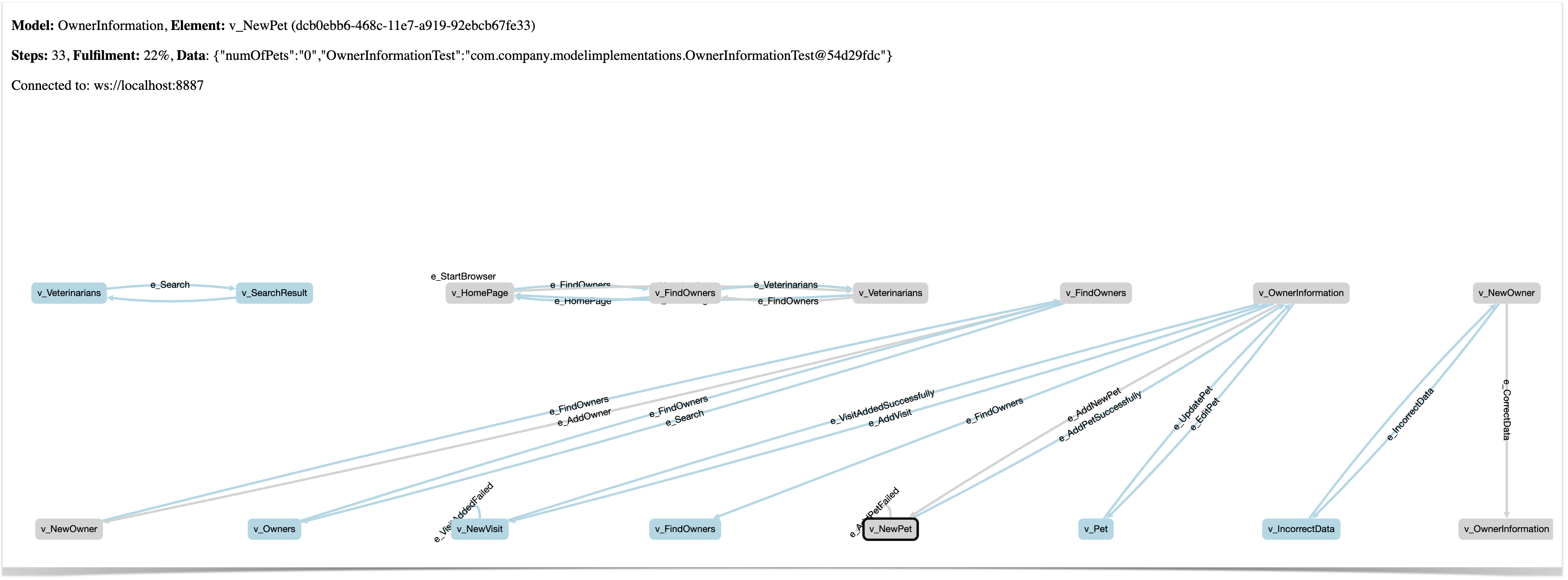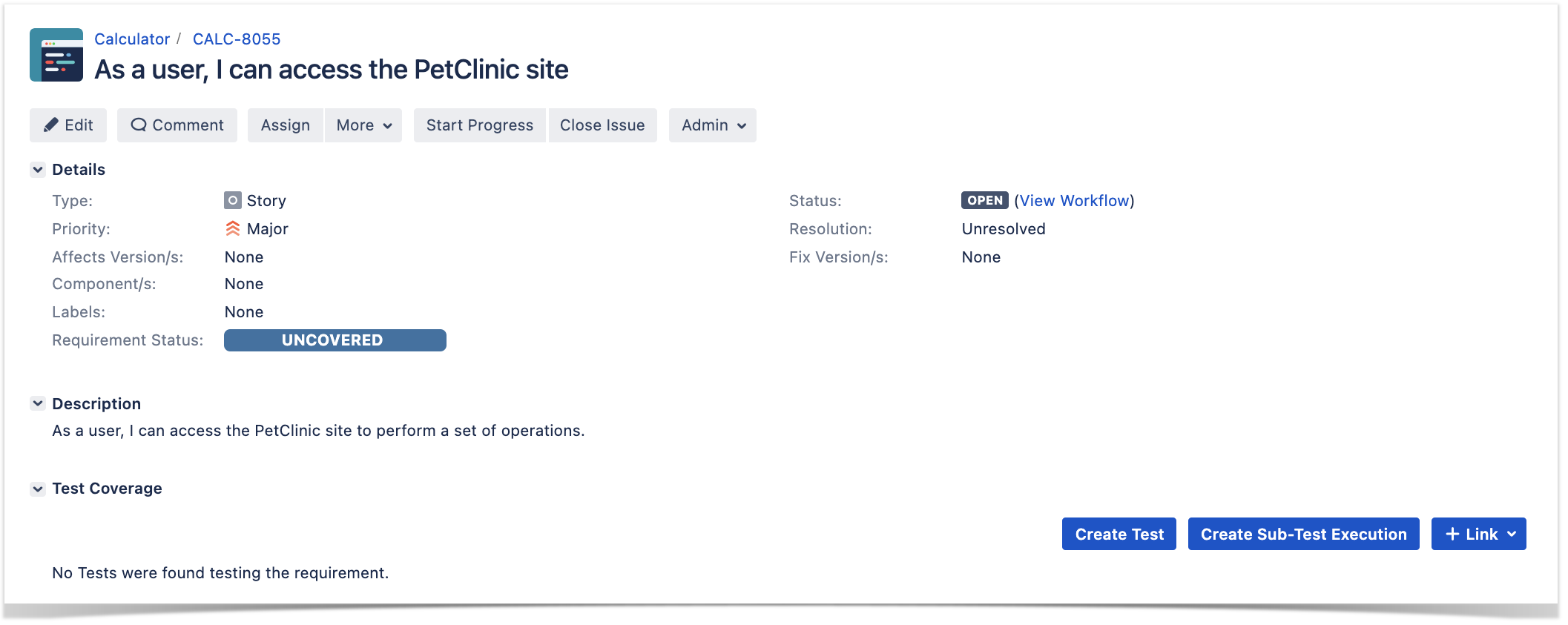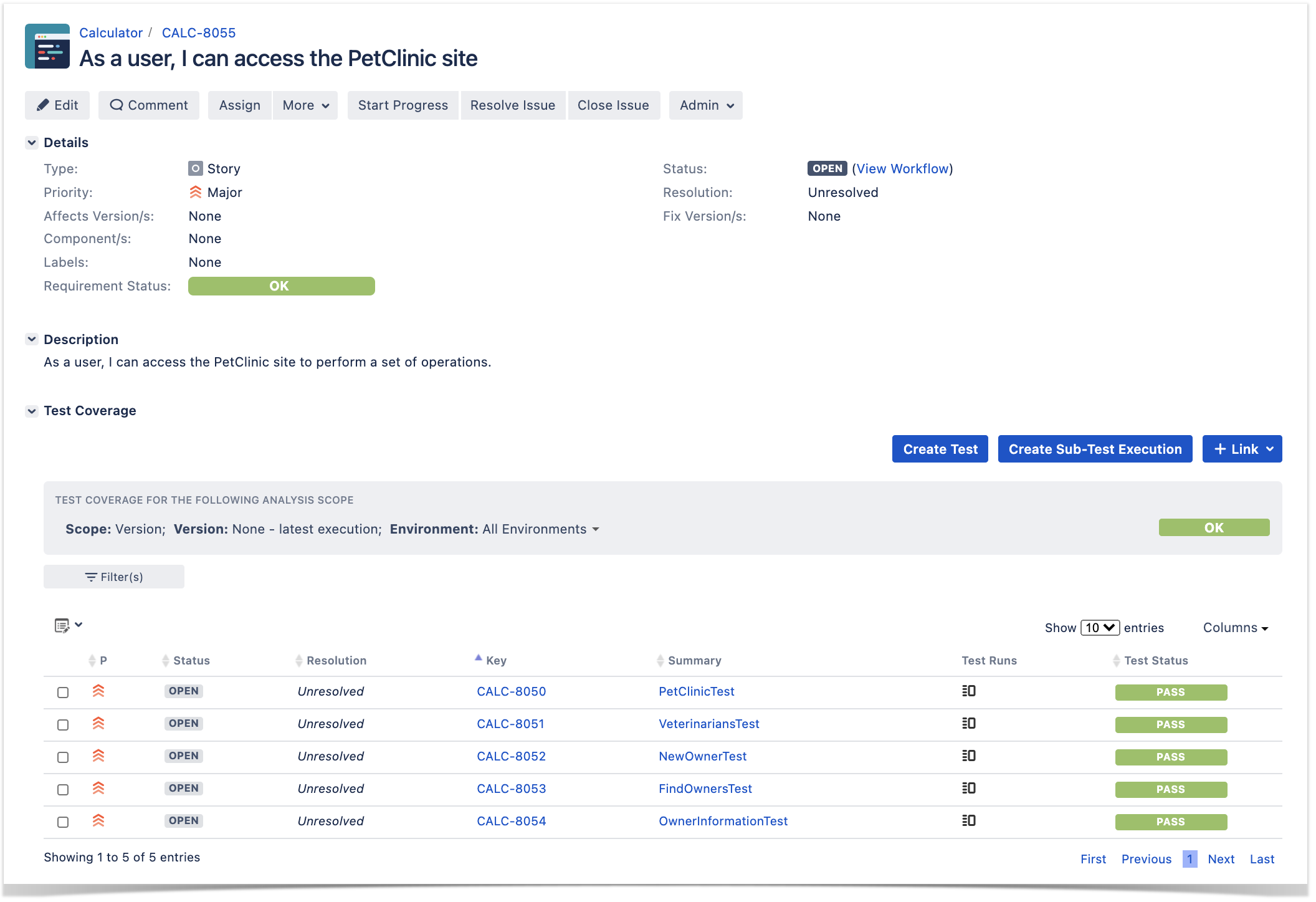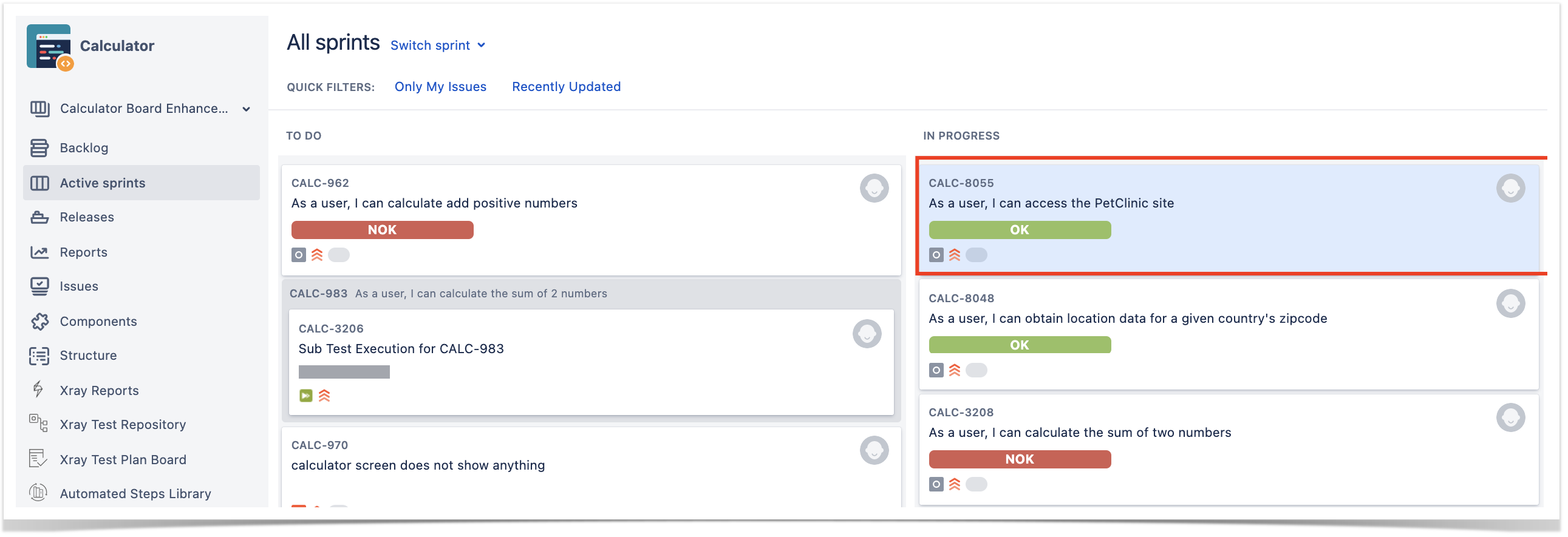Page History
...
From a model, GraphWalker will generate a path through it. A model has a start element, and a generator which rules how the path is generated, and associated stop condition which tells GraphWalker when to stop generating the path.
Generators and stop condtions conditions are essential in GraphWalker (more info here and here), as they influence how the model will be transversed "walked" and until when.
Multiple models can interact with one another (i.e. jump from one to other and vice-versa), using shared states (i.e. vertices that have a "shared name").
...
- action: a way of setting variables in the model or global context; actions are mplemented implemented using JavaScript
- guard: a way of blocking/guard edges from being walked/executed, usually considering variables stored in the model or global context; guards are implemented using JavaScript.
...
We can say that GraphWalker produces dynamic test cases, where each one correponds corresponds to the full path that was generated. Since the number of possible paths can be quite high, we can follow a more straightforward approach: consider each model a Test, no matter exactly what path is executed. Remember that a model in itself is a high-level test idea, something that you want to validate; therefore, this seems a good fit as long as we have the means to later on debug it.
...
In sequential scripted automated tests/checkeschecks, we look at the expectactionexpectation(s) using assert(s) statement(s), after we perform a set of well-known and predefined actions. Therefore, we can clearly say that the test scenario exercised by that test either passed or failed.
...
When we "execute the model", it will keep transversing/walking the path walk the path (i.e. go over from vertex to vertex through a given edge) and performing checks in the vertices. If those checks are successful until the stop condition(s) is achivedachivied, we can say that it was successful; otherwise, the model is not a good representation of the system as it is and we can say that it "failed".
...
In the previous example, we can see that the class NewOwnerTest extends ExecutionContext; this ties the model with the path generator and provides a context for tracking the internal state and history of the model while it is transversed.
The @GraphWalker annotation is used to specify the path generator and stop conditions. This is used for online path generation during test execution.
...
| Info | |||||||||
|---|---|---|---|---|---|---|---|---|---|
| |||||||||
Tests using the model can also be created and executed programatically programmatically similar to other tests, using JUnit or other testing framework. More info here and here. The flow would be something like:
In this case, we could execute the tests using Maven. We would then use the JUnit XML report produced by JUnit itself.
|
...
- Use MBT not to replace existing test scripts but in cases where yoou need to provide greater coverage
- Discuss the model(s) with the team and the ones that can be most useful for your use case
- You can control the seed of the random generator used by GraphWalker, so you can easily reproduce bugs (i.e. by reproducing the generated path)
- You can use GraphWalker Player to see the graph being transversed in walked in real-time. You can use a sample HTML file that contains the code to connect to a WebSocket server that you need to instantiate in the runner side (example) .
- Example:
- open the file index.html in your browser, using an URL such as "file:///Users/you/index.html?wsURI=localhost:8887?wsURI=localhost:8887"
- execute GraphWalker, using the custom runner
mvn exec:java -Dexec.mainClass="com.company.runners.WebSocketApplication"
- Example:
- Multiple runs of your tests can be grouped and consolidate in a Test Plan, so you can have an updated overview of their current state
- After importing the results, you can link the corresponding Test issues with an existing requirement or user story and thus truck coverage directly on the respective issue, or even on a an Agile board
References
...



